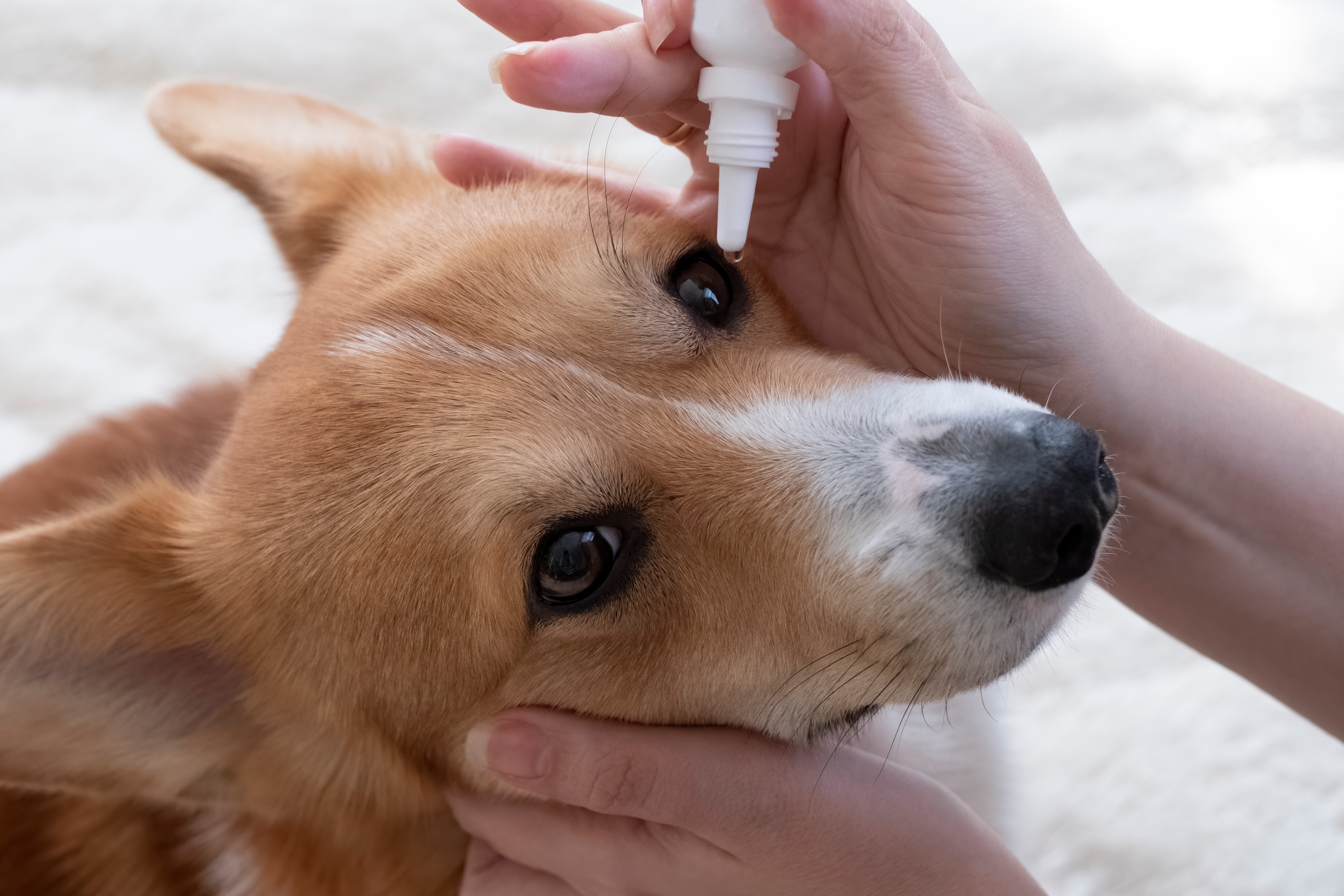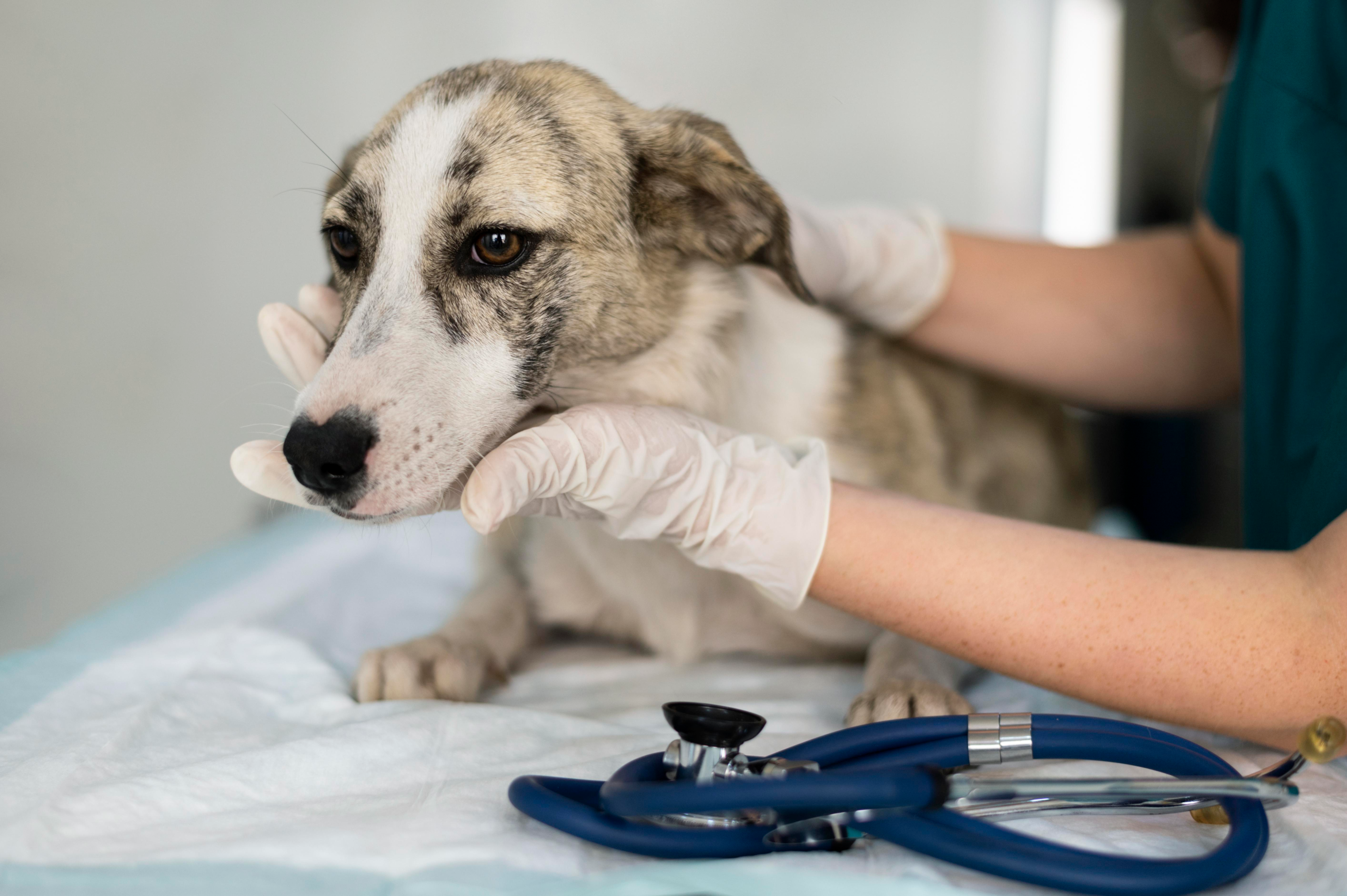
Have you ever noticed your furry companion blinking excessively, rubbing their eyes, or displaying signs of discomfort?
Unfortunately, our canine friends are not immune to eye problems that can affect their overall well-being.
Understanding common dog eye problems is crucial for every pet owner, as early detection and quick attention can make all the difference in your dog's health.
This article will explore some of the most prevalent eye issues dogs may face while shedding light on their causes, symptoms, and potential treatments.
From conjunctivitis to cataracts, let's dive into the world of canine eye problems to ensure your four-legged friend enjoys a lifetime of clear and bright vision.
8 Common Dog Eye Problems

Understanding common eye problems in dogs is essential for keeping your furry friend bright-eyed and healthy.
Let's look at some common dog eye problems.
-
Eye infection
Dogs can get eye infections that affect different parts, like the eyelid, the pink part inside the eye, or the eye itself. These infections can happen because of bacteria, viruses, or fungi.
Contact your vet immediately if you see any of these signs:
-
Yellow, green, or red stuff coming out of the eyes
-
Excessive blinking
-
Eye redness
-
Swelling
-
Crustiness
-
Losing hair on the eyelids
-
Eyes looking very red and swollen
-
If your dog is squinting or keeping their eyes closed
The vet might use a special dye to check for eye injuries. Treatment involves giving your dog eye drops to heal the infection and improve the swelling. If the infection is on the eyelid, the vet might also give your dog antibiotics in pill form.
-
-
Cherry Eye in Dogs
Cherry eye is when a dog's tear gland on the third eyelid slips out of place. It's more common in large breeds with droopy eyelids. The tear gland becomes swollen, forming a pink ball that blocks the eye.
With cherry eye, it's important to see the vet. Anti-inflammatory eye drops might help for mild cases, but surgery is often needed to fix it. However, cherry eye can return even after surgery.
-
Glaucoma
Glaucoma in dogs happens when there's too much pressure in their eyes. Usually, the eyes balance fluid, but the pressure goes up in glaucoma. Early signs are red and painful eyes with visible vessels.
For early glaucoma, vets use medicines to lessen fluid and help it drain better, reducing the pressure on the eye.
In extreme cases, if meds don't work and the eye still hurts, the vet might recommend surgical removal.
-
Conjunctivitis
Conjunctivitis, commonly known as pink eye in dogs, is a bacterial infection affecting the moist tissue around the eye and beneath the eyelid.
Look out for these signs, like green or yellow goo coming from the eye, squinting or keeping the eye closed, excessive rubbing of the eye due to pain or itchiness, and bloodshot whites of the eye.
Conjunctivitis in dogs is often caused by allergies or, rarely, a virus. Treatment involves using bacterial eye drops, ointment, and sometimes a steroid to reduce swelling. Most dogs get better within a week. It's important to visit the vet for an evaluation and the right treatment for your dog.
-
Ectropion and entropion
Ectropion happens when a dog's lower eyelid sags or turns outward. Meanwhile, entropion is when a dog's eyelid rolls inward.
While it's usually not a big issue, it can sometimes lead to ongoing problems like inflammation, dry eyes, or infections. If you notice signs of discomfort, seeing the vet is essential. Fortunately, surgery can correct ectropion, ensuring your dog's eyes stay healthy.
However, in severe situations, entropion may even lead to permanent damage to the cornea, affecting the dog's vision, so timely treatment is vital.
-
Cataracts
In dogs with cataracts, the middle part of their eyes looks cloudy because the clear lens becomes cloudy. This cloudiness can happen in one or both eyes.
Cataracts can be inherited or caused by different diseases. For example, if a dog has diabetes, the extra sugar can make the lens swell and might even lead to serious eye inflammation.
Sometimes, cataracts show up as dogs age or can happen because of eye infections. Depending on how big and serious the cataract is, a dog might lose a lot of vision or even go blind.
-
Lazy eye
Lazy eye, also known as strabismus, happens when a dog's eye muscles don't work together, making one or both eyes not look straight.
In some dog breeds like Pugs and Boston Terriers, this condition is something they're born with and is pretty normal; it doesn't need treatment. But if a lazy eye suddenly develops, it's important to see the vet.
A sudden lazy eye might mean a problem with the dog's balance system in the brain, or there could be a lump in the bone around the eye.
-
Corneal ulcer
A corneal ulcer in dogs is like a scratch on the clear part of their eye called the cornea. When a dog has this, their eye might look cloudy, and there could be gooey stuff, like green, yellow, or clear discharge.
These ulcers can happen if a dog gets hurt or has an infection or if their eye gets inflamed from being too dry all the time. Dogs with that kind of "buggy" eyes, like certain breeds with flat faces, are likelier to have this problem.
Corneal ulcers hurt a lot, so you might notice your dog closing their eye or rubbing at it. Going to the vet quickly is really important to help your dog feel better. Treatment includes using special drops with antibiotics and ensuring your dog can't rub their eye, usually with a collar.
-
Dog eye allergies
Like how allergies can make a dog's skin act up, they can also have an eye allergic reaction.
When dogs have eye allergies, their eyes might be red and itchy. Sometimes, they can get bacterial infections; you might see green, yellow, or clear stuff coming from their eyes.
To help, vets suggest using special eye drops with corticosteroids and, in some cases, antihistamines. Visiting the vet to figure out which treatments will work best for your dog is essential.
-
Dry eye
Dry eyes in dogs happen when the dog's tear glands act up, their tear production goes down, or their eyes are overexposed.
For dogs with flat faces whose eyes might not close completely, leading to dry eyes. If a dog's tear glands get damaged, either by the immune system or nerve issues, tear production goes down, too.
Dry eyes make a dog's eyes red and inflamed, and there might be a bit of green or yellow stuff. To help, there are artificial tears and special eye drops and ointments made for dogs. These keep the eyes moist and stop tear glands from getting damaged.
The treatment is something dogs need for their whole lives to avoid serious eye problems, so it's important to visit the vet for the right medicines.
How To Treat A Dog's Eye Infection?

Treating your dog's eye infection depends on what's causing it.
Here are some ways vets might help:
- If germs are causing the infection, the vet may give your dog an antibiotic eye drop or medicine to fix it.
- The vet might suggest antihistamines if allergies make your dog's eyes sore.
- If something, like dirt or a small object, is bothering the eye, the vet might need to remove it.
- Sometimes, the ducts that help tears flow get blocked. The vet might do surgery to fix it and then give medicine and eye drops to help your dog heal.
- Some dogs with dry eyes that don't make enough tears get prescribed medicine to help their eyes stay moist and comfortable.
- If the eyelid mass or eyelashes are causing trouble, the vet might suggest surgery to make things right.
Final Words
To sum up, taking good care of your dog's eyes is super important. If your dog shows any signs of eye trouble, like redness or weird discharge, it's best to see the vet quickly. Regular check-ups and catching problems early can help keep your dog's eyes healthy.
Whether it's an infection or something else, the vet can figure it out and suggest the right treatment. With proper care, medicine, and sometimes a bit of surgery, you can make sure your dog sees the world clearly and stays happy.
FAQs
How can I tell if my dog has eye problems?
Watch for signs like excessive blinking, redness, cloudiness, pawing at the eye, swelling, discharge, squinting, unequal pupil sizes, changes in behavior, or bumping into things. If you notice anything, consult a vet promptly.
Can a dog ear infection cause eye problems?
The answer is usually no, except for a particular dry eye condition called neurogenic keratoconjunctivitis sicca.



















